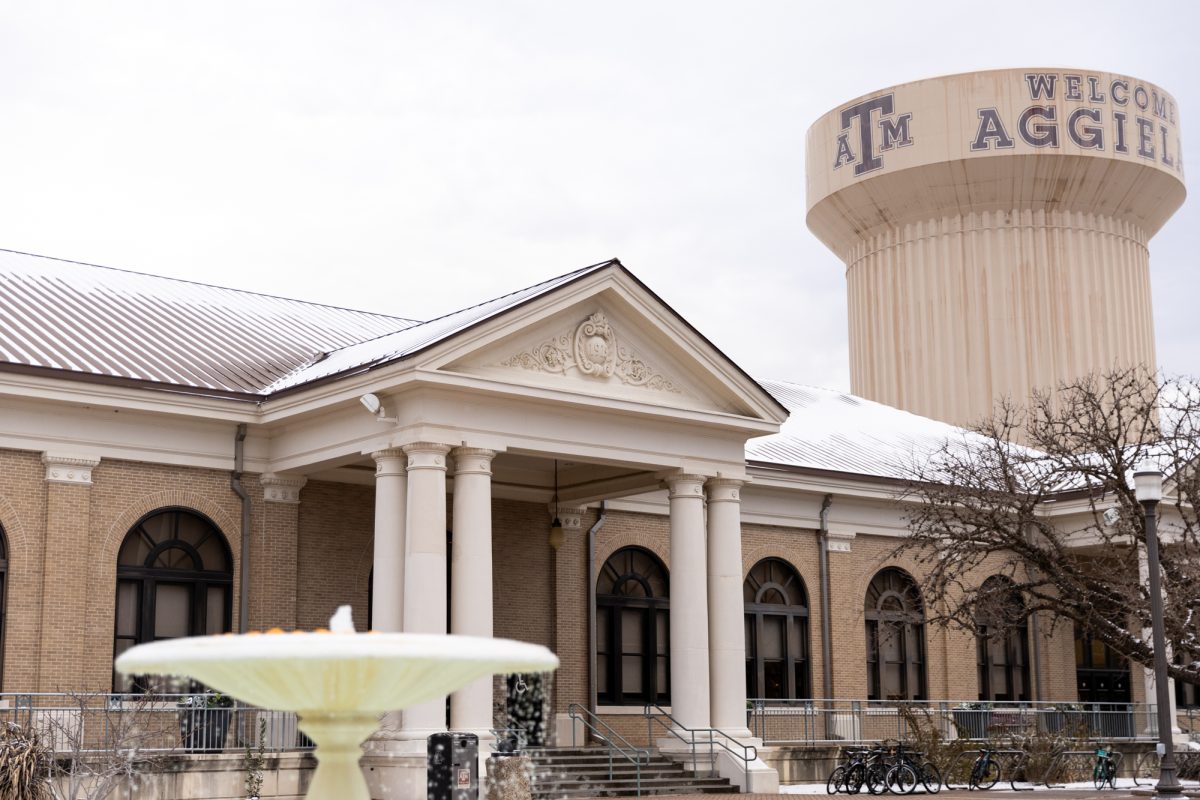Editor’s Note: This article has been updated since original publication to reflect corrections to a misattribution.
For most college students, the spring brings immense pressure to perform academically. However, these anxieties will be felt far more by Texas A&M engineering freshmen.
Why? Well the Entry to a Major process, or ETAM, lies just around the corner.
For the unaware, incoming engineering freshmen at A&M are not directly admitted into their major. Rather, they begin their first two semesters in the “general engineering” program, during which they will be enrolled in a set of standardized courses intended to cover engineering essentials including calculus, physics and coding.
Upon completing their first year, students enter the ETAM process to receive their specific major. Freshmen will be asked to select their three most desired degrees and then will be assigned one through a holistic review process. Notably, however, applicants with a GPA of 3.75 or above receive “auto-admit” status and are automatically enrolled in their first-choice program.
Many may find this system quite absurd. Why not enroll engineering students into their major during the admissions process like any other program? Well, the stated rationale — as explained by the College of Engineering website — is that before ETAM, students were constantly switching degrees within the department.
“[Then-Dean M. Katherine] Banks came in, she looked at our time to graduation and the number of students who are changing their majors and saw that it was high. So, she challenged the faculty to rethink what we do, ‘Is there a better way to do this?’ That’s where the Entry to a Major came from,” associate dean for Undergraduate Programs in the College of Engineering Angie Hill Price said.
While ETAM certainly helps to mitigate these concerns, its implementation leaves much to be desired.
Many engineering freshmen are understandably anxious regarding the possibility of being denied admission into popular majors, which in turn fosters an unhealthy academic environment.
Cognizant of the GPA cutoff for “auto-admission” status, many students opt to enroll in fewer hours than they otherwise would, resulting in less coursework and a potentially higher GPA. Some opt to enroll in excess hours, taking many “easy,” GPA-boosting classes.
Many other students retake classes for which they could already claim credit, such as aerospace engineering sophomore Marshall Mann.
“I probably could’ve skipped [Calculus] I,” Mann said. “I chose to retake it because I said, ‘I can easily grind out an A in this class, so it will be a little easier.’”
Worried about ETAM, I personally made the decision to take only 13 hours last semester in order to ensure auto-admit status. While it resulted in the grades I desired, I spent most of my semester feeling unchallenged.
Ideally, freshmen at A&M should be encouraged to enroll in difficult courses to broaden their horizons and invest in extracurricular activities to develop their social lives. However, when the cost of receiving a few Bs can mean being denied admission into top-choice, popular engineering majors, students are discouraged from doing so.
Instead of enhancing their education, ETAM ensures freshmen have an active interest to seek an academic environment where they feel comfortable at the cost of their own growth.
Another glaring flaw with the ETAM process is it inevitably denies many students the opportunity to study their desired major. But, how competitive are these programs exactly?
Unfortunately, the College of Engineering is not especially transparent or forthcoming with the exact figures. One of the only statistics made available by the college is that 82.3% of engineering students receive their “first-choice” major. However, this figure is incredibly reductive, considering demand is highly concentrated within only a few programs.
According to data obtained and authenticated by The Battalion, admission rates for popular majors fail to keep pace with demand from ETAM applicants. The most dramatic example of which is biomedical engineering. Take the 2018 spring ETAM cycle, where only 52.4% of first choice holistic applications were admitted into the biomedical engineering program. Two years later in the 2020 spring ETAM cycle, this figure was zero.
To reiterate, not a single holistic applicant was admitted during the 2020 spring cycle, implying that this major only had the capacity for auto-admissions.
So, if many majors lack the ability to meet the demand of incoming freshmen, why not simply expand these departments? Well, the bottleneck appears to be recruiting the faculty necessary to do so.
“The problem is simply hiring people,” Hill Price said. “You can’t just walk off the street and hire faculty, particularly for computer science; it’s a huge challenge because there’s a very specific skill set that’s required.”
If many departments cannot keep pace with the demand from students, the solution appears incredibly straightforward: enroll fewer students. This, in turn, would allow the capacity for popular majors to catch up to the volume of applicants. Doing otherwise means continuing to deny many students the opportunity to study in their preferred field.
Instead, the College of Engineering bafflingly continues to increase enrollment with each year, in order to reach 25,000 engineering students by 2025. This, in turn, further fuels the disparity between supply and demand for competitive majors.
While obtaining the specialized faculty necessary to expand a particular engineering department can be quite difficult, the same cannot be said for the general engineering program.
Courses such as Engineering Math, General Chemistry for Engineering Students and Newtonian Mechanics for Engineering and Science all serve as general introductory courses in their respective subjects, meaning there is a wider talent pool available to instruct these classes.
In fact, professorship — in the case of Engineering Lab: Computation I — is not necessary for instruction and is often taught by “senior lecturers,” who require fewer resources to employ.
Many of these classes are typically offered in large classrooms such as a space in the Innovative Learning Classroom Building, or ILCB, meaning a single professor is capable of instructing hundreds of students at a time. In fact, over 1,100 Engineering Mathematics I students comprising only four lecture periods had their instruction in the same ILCB room during fall 2021, according to the class search tool in the online Howdy portal.
The general engineering program is — in one word — efficient. By consolidating the needs of 22 undergraduate programs, it circumvents the procurement of more specialized faculty. Not only that, it squeezes the most out of these hires by allowing them to teach as many students as possible at a time.
But, are students best served by these courses? In many cases, the class size for such lectures are large and often exceed 200 students. In addition, many engineering specialties would benefit from a more particularized set of courses.
For instance, A&M computer science and engineering hopefuls spend their freshman year studying chemistry — a course not relevant to their field — while their peers at other institutions study within their specialized major. Using the University of Texas degree plans as an example, computer science majors typically enroll in discrete math and data structures during their freshman year. In the case of A&M, this will usually be delayed until their sophomore year. As a result, A&M students may end up far behind their peers at other universities.
In many instances, the general engineering program is indicative of a tradeoff for capacity and volume at the expense of the individualized needs of freshmen.
ETAM is, at its core, an institution preoccupied with scale and efficiency, not students. In fact, the standardization and growth facilitated by the ETAM process — intentionally or otherwise — resembles that of a factory, not a college.
Like a product subject to the machinations of an assembly line, the process of producing an engineer is now incredibly homogenized and done en masse. Freshmen are scrutinized and objectified, reduced to a set of grades as if they are a quality standard, their potential obscured to the point of unrecognizable metrics. Once the raw materials have been processed, the fixation on academics that ETAM facilitates ensures the production of students, rather than well-rounded individuals.
This mechanical system is one independent of the resources of any specialized engineering department, and therefore easily scalable in scope. As a result, the College of Engineering is enabled to continue increasing enrollment each year.
Hill Price argued expansion still has merits for A&M.
“I think the growth has been beneficial because more students are getting the opportunity to come in,” Hill Price said. “Part of our land grant mission as a university is to provide that type of education to help our students serve the public and to get jobs in the impressive engineering fields.”
I, too, strongly believe in broadening access to higher education. However, with growing enrollment comes the responsibility to adequately serve the needs and ambitions of these students. But, as long as ETAM continues to foster a toxic academic environment and deny freshmen their dreams, it remains abundantly clear that we have failed to do so.
Caleb Elizondo is an engineering freshman and opinion columnist for The Battalion.
















